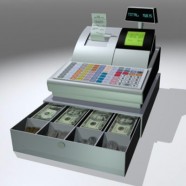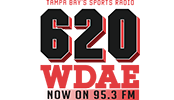Deconstructing Sharp Money
As most of you that have read my work and seen my contributions to the sports betting community on twitter realize, part of my focus has always been on educating the betting public. Whether it’s the more basic concepts the seasoned veterans take for granted or complex theories on identifying an edge, social media has bridged the gap between novices and professionals faster than I ever could have anticipated. One term that gets tossed around with alarming regularity is sharp money. I’ll be the first to say each week when I share my Sunday Pros vs Joes tweets or discuss line movement during the week I often ignore the in-depth explanation thats relevant to explaining exactly what I mean when I say sharp money.
Every dollar in the sports betting market is not created equally. Any bettor or oddsmaker who tells you otherwise won’t have a long career on either side of the counter. There are advantaged bettors out there and while their aren’t a ton of them, the sharpest bookmakers respect and value their input. Everyone knows the name Billy Walters but he’s not the only guy out there capable of moving lines. Plenty of other sharp bettors who may only bet 3k to 5k a game can walk into a local sportsbook here in town only to have their bet refused entirely or scaled back to lesser limits. The smart bookmaker identifies those with an edge allowing them to bet only to move the market as soon as bet has been placed. This example helps explain the concept of “reverse line movement” whereby a line moves against the high volume of public tickets. Books adjust prices based on sharp gamblers bets because they have a history of beating the market and being successful long term. The house always prefers to be on the side of the professional bettor, allowing liability to mount on the public side creating potentially profitable decisions. For lower volume sports like college basketball, you’d be amazed at how little money coming from the best bettors in the world can send the entire market into complete upheaval. Bettors understand this and know they have to be careful about when they’re getting down cash on a game to prevent every book from reacting simultaneously. Getting down becomes an art form for the world’s biggest groups above all else, little to say it’s a problem most of the folks reading this post, myself included, will never encounter during our betting career.
I believe the biggest misconception in all of this is that sharp money somehow hits right around 100%. Sharper bettors operate within the same parameters as the rest of us, striving to hit 60% but with the understanding winning the biggest positions and hitting 55% is pretty damn profitable too. Every Sunday morning I inevitably get a handful of knuckleheads telling me I’m an idiot when I share information that’s come from the bettors and sportsbooks they don’t agree with because they bet the other side. My goal isn’t to tell you that the ticket you’re holding is a loser. The reason I share this information is so members of the twitter community can understand if its public or professional cash moving the markets. Sharp money coming in on opposite sides of a game happens frequently in a lot of sports however it’s rare the biggest betting groups in the world oppose each other in the NFL. Don’t think every time sharp money comes in on a particular side or a number steams out of control the game is over before it starts. For every Tampa Bay Buccaneers against the Lions game like this past Sunday there’s a Toledo Rockets against Northern Illinois when a price moves 3 pts only to see the sharp side lose by 18. Keep in mind every line move is to be respected with the end goal for all of us to eventually understand what group/gambler is behind the market shift. Don’t fall victim to thinking every “sharp” move will win or that every time your odds screen lights up it’s a true position from the boys in the know, you’ll spend too much time in steam chasing mode instead of picking winners.












